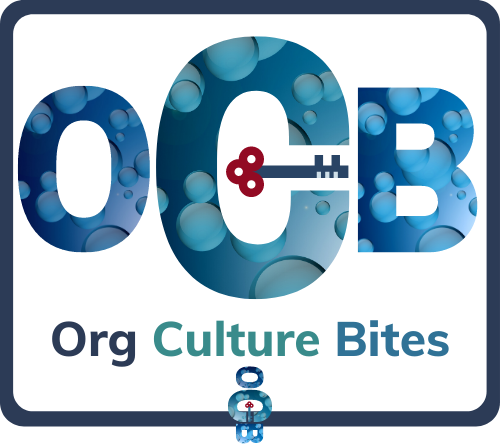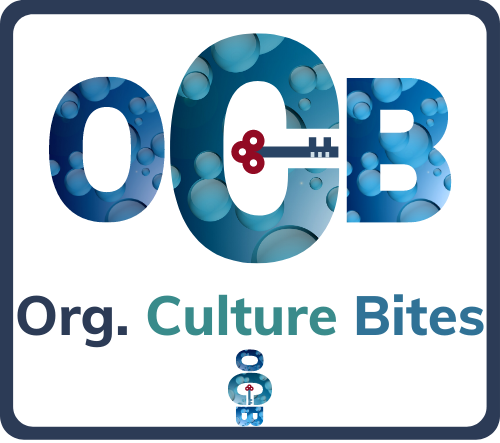-
 play_arrow
play_arrow
-
 play_arrow
play_arrow
-
 play_arrow
play_arrow
-
 play_arrow
play_arrow
- Home
- keyboard_arrow_right Blog
- keyboard_arrow_right HR Leaders
- keyboard_arrow_right Are you getting value from your values?

5 Tips to successfully embed and leverage your organisational values
By Angela Lewis, Founder OCB.

One of the most common challenges I come across when working to align organisational cultures for improved performance, is the ability to leverage and embed client values through their culture, leaders, teams, decisions, problem solving and day-to-day operational activity.
Before I share some of the best ways in which organisations can improve the effectiveness of their values and bring them more to life within their businesses, it’s important to understand why embedding values can be so difficult.
What are values?
Organisational values are typically a list of capabilities and beliefs about the organisation’s conduct and the way in which people should focus their efforts, decisions and behaviours when they get things done at work. Usually these have been set by the organisations leaders at the same time as developing their vision organisational purpose and goals. Values are like ‘guard rails’ or guidelines that don’t necessarily give you the answer, but they suggest approaches and principles to consider when faced with uncertainty.
Values are dynamic and should be updated alongside any strategic adjustments which require a different mindset or attitude towards the way people must deliver their business and services. They reflect what the organisation stands for – what they would like to be known for by their clients and employees as they define and differentiate themselves in the market.
Why are values difficult to embed in organisations?
What makes values challenging to apply consistently within organisations is that they can be very personal – values are shaped by beliefs, feelings, sensitivities and varied employee experiences. The same word may have a slightly altered meaning for different people, in different roles, functions and in different locations. Some personality styles may have a stronger preference to express themselves and their values, more than others who may prefer to hide their feelings.
Furthermore, values can often come into conflict or be ‘competing’ with each other. For example, the value ‘Innovative’ often needs to be balanced with ‘commercial mindset’ so that new products being developed provide adequate profit margin. Similarly, ‘Quality’ is often challenged by the need for ‘Efficiency’ at the same time. When these important aspects of the work focus and conduct come against each other, it can be extremely difficult to decide which is more important to prioritise, in any given context. The result is immobilisation of decision making, the need for escalation, review or ‘work arounds’ in order to make progress. This can slow things down, even lead to further conflict or avoidance of the issues.
How can people & organisations bring values to life more easily?
Because of the nature, variation and interpretation of values, they may require a deeper explanation of context or conversation, in order to truly understand what the values are, how they are perceived, what they look like, mean or how they may be best be applied in different situations. This requires patience, focus, an intention to understand and effort by all involved.
The following are some ‘top tips’ to help bring clarity and life to your organisational values. These will help you generate value internally with your people and ultimately externally drive value for your customers:
1. Use plain language and personality.
Define your values so they are easier for everyone to understand and personally identify with. There are so many generic values and blanket statements that could be used in any organisation. Own your company values like your favourite music artist and make them sing. Make connections with your values to your products and customer profiles, so they are tangible.
For example, Diageo’s ‘Passionate about Consumers’ value puts external consumers at the heart of internal energy and focus. It drives employees to ask themselves about how well they know their market and their customers. This value challenges them to strive to obtain insights about what will delight consumers or attract the market to their brands, driving excellence and growth.
2. Vividly link values to context.
Provide useful examples of how your Values relate to the customer experience and your business goals. If you or your team can’t provide a clear example of how each of your organisational values relate to job situations, problem solving or decision making, create the picture together so everyone can see the connection.
For example, authors Cameron & Quinn in their book Diagnosing and Changing Organisational Culture Based on the Competing Values Framework, suggest an activity for leaders to identify stories as a powerful way to communicate with teams. Some questions you could ask yourself are: What incidents have occurred that represent the best we hope to achieve or positive outcomes, and how were Values instrumental in this?
Describe what the Value looks like in certain situations, when it is leveraged for good as well as when it can become a problem or over used. Discuss with people and teams what using the value means… as well as what it doesn’t mean, so they understand, visualise and calibrate different situations it may be used.
3. Genuinely weave values through work life (Employment Experience & Talent Practices.)
Great HR practitioners and Leaders know that Culture, Employment Brand and values are integral to organisational performance. At every step of the employment life cycle, people need the right mindset, mechanisms, processes, tools and guidance to recognise and encourage alignment to your brand promise.
For example, an aligned Culture/Employment Promise /Customer Promise would ensure that the language, core capabilities and symbols used in Attraction and Recruitment reflect the vision, personality and priorities of the organisation and the products or services it offers to the market. Values and core capabilities would also be consistently reinforced through On-boarding, Development, Promotion, Reward, Recognition and Exiting activities throughout the employee life cycle.
There is no point having a ‘People Focus’ value if your leaders do not have the investment in capability or time to have frequent, open and dynamic conversations with their team members about important things to them – such as their long term career goals, feedback and support troubleshooting issues. Neither would it be valuable to have managers that don’t listen, value or recognise others, or invite feedback on their own behaviours to grow themselves in a ‘People Focused’ environment.
4. Lead through connection with your values.
Employees look to leaders to role model organisational values and ‘test’ their authenticity in reflecting these values through their words, actions and behaviours. People learn more through what they see, compared to what they are told. It is therefore important that employees – at all levels – are aware of the way they behave in alignment with organisational and personal values, as well as consistency of the manner in which they are applied.
If your leaders are not aware or personally connected to your values, are not demonstrating them every day or if they are even undermining them… you are exposing yourself and others to operational risk.
For example: Think about what happens when people make mistakes, or are under pressure…how do they act in relation to values and what are they being true to? What do you do when you see someone not using organisational Values? Do you feel confident to speak up and share your perception or are you afraid to challenge the situation? Why? What is the long term impact of doing this – to you and the organisation?
One way you can get more comfortable with demonstrating values (and holding others to account), is by getting leaders to openly share which of the values they connect with most and why. When and where do they come into conflict? How do they deal with this or who else have they seen do this well? Have them explain this to peers and teams to build exposure, understanding and confidence. When your leaders are coaching or giving you feedback, encourage them to connect with organisational and personal values to illustrate points.
5. Measurement.
Use a framework to accurately define, measure and track how well you ‘live and breathe’ values across the business. Be clear about what strong and weak performance looks like so you build a shared understanding of expectations and calibration of how well you meet these. How well do you do what you say? Explore where there is strong understanding of your values, where they are successfully embedded and leveraged towards performance, or where they are not.
Seek insight about the relevance of organisational values to your current market and operating context. Refresh them if need be, to ensure they are enabling organisational success in line with your strategic goals.
For example, use a new or piggyback on an existing survey / diagnostic tool to measure current understanding and experience of ‘what is’ compared to ‘what should be.’ This integrates well with tip #1, as it uses common language to help everyone define the values & consistently measure perceptions about them.
Leveraging your organisational values helps business generate value – internally and externally. Values help employees build confidence, competence, focus, prioritisation, problem solving and resolve conflict more effectively.
Please share some of your stories about how you bring your values to life and how this has made an impact to your business…
© 2015 - 2019 Orgculturebites. Trademarks and brands are the property of orgculturebites



Post comments (0)